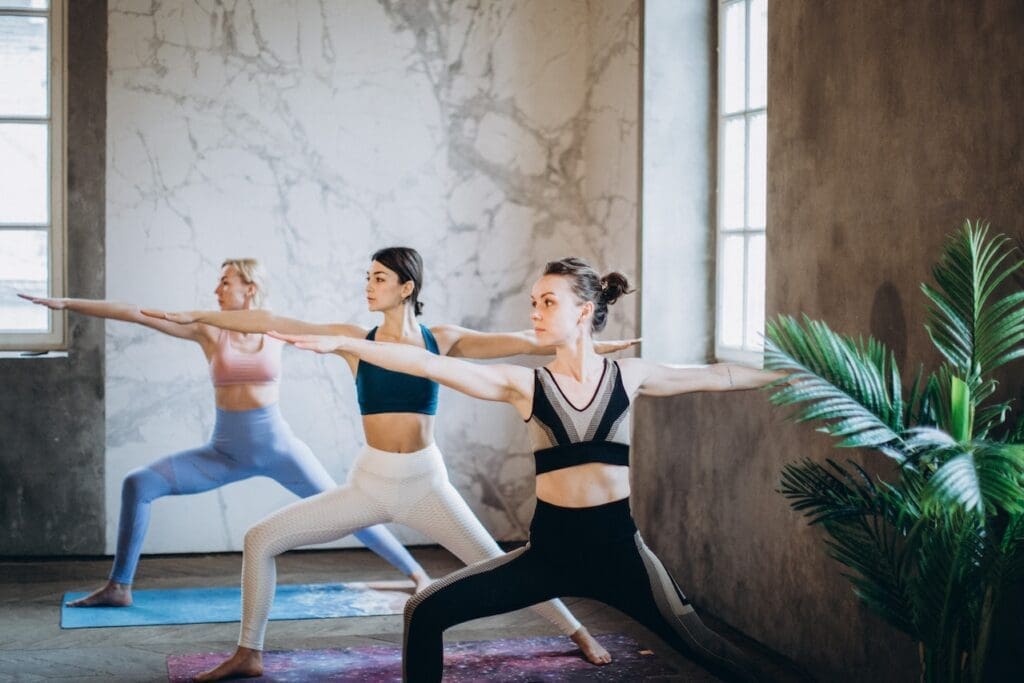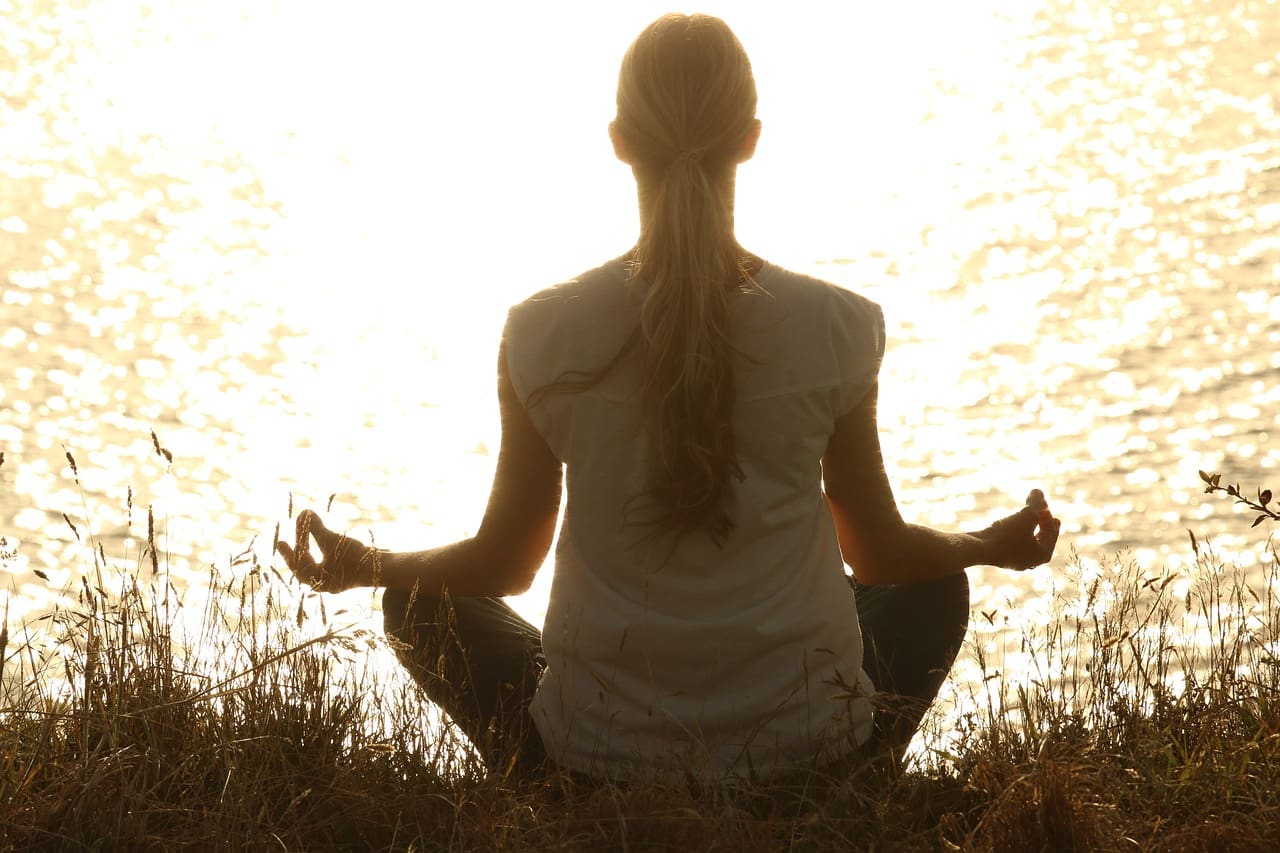Understanding the Importance of Regular Yoga Practice
As we venture into the dynamic world of Yoga, it’s essential to understand why we should practice yoga regularly. Yoga is not just a form of exercise; it’s a lifestyle that has profound effects on both physical and mental health. Whether you aim to build strength, improve flexibility, or achieve mental peace, yoga is the gateway to attaining these benefits. National Institutes of Health on Yoga: What You Need To Know
Physical and Mental Health Benefits of Yoga
Many who practice yoga regularly report an improvement in their overall health status. The physical benefits are notable and range from improved posture, reduced lower back pain to enhanced flexibility and strength in the legs. One pose to the next, you work different muscles and joints, promoting mobility and agility.
Beyond physical benefits, yoga is also praised for its effects on mental health. Meditative aspects of yoga encourage mindfulness, promote stress reduction, and lead to improved concentration. The American College of Physicians recommends yoga as a first-line treatment for chronic low back pain, emphasizing its holistic approach to wellness.

How Yoga Helps: Insights from Research on Yoga
Research on yoga has shown a positive impact on various health conditions. For example, a study by the National Institutes of Health showed that yoga may help manage high blood pressure and symptoms of chronic obstructive pulmonary disease (COPD). Additionally, yoga has been shown to alleviate symptoms of carpal tunnel syndrome and arthritis.
The Role of Yoga in Managing Arthritis
Practicing yoga may help alleviate the symptoms of arthritis, including joint pain and stiffness. Gentle yoga styles, like Hatha yoga, are often recommended for arthritis patients as they include gentle and slow-paced asanas that promote joint mobility without causing strain. Hatha yoga focuses on balance and alignment, making it a suitable choice for those with physical limitations.
Creating a Dedicated Space for Your Yoga Practice
One essential part of yoga is creating a conducive environment for your practice. This does not necessarily mean you need a large space or a special room. The focus here is to create a calm, peaceful space that allows you to practice yoga without interruptions.
Choosing the Right Yoga Mat
Your yoga mat is a crucial accessory. It provides grip, defines your space, and can aid in maintaining balance during different poses. Choose a mat that is comfortable, has enough cushioning to support your spine and hips, and is made of a material that is easy to clean.
Setting the Mood: Importance of a Calm Environment
Creating the right atmosphere for your yoga session plays a crucial role in the effectiveness of your practice. Ensure the room is clean and decluttered. A calm environment helps to keep the focus on the yoga philosophy and enhances your connection to the practice. Natural elements, like plants or a view of the garden, can enhance the tranquility of your yoga space.
Necessary Yoga Accessories
Beyond your mat, other yoga accessories can help enhance your practice and make certain poses more accessible. Props such as yoga blocks or bolsters can help improve alignment, especially in seated poses or poses that require extra support.
*Stay tuned for the second part of this blog post, where we will delve into the selection of the right yoga class and yoga pose, making time for yoga in your daily routine, and practical tips and techniques for regular yoga practice.
Choosing the Right Yoga Class and Yoga Pose
Different Types of Yoga: What Suits Your Needs?
There are many yoga styles to choose from, each offering a unique approach. Hatha yoga focuses on basic postures and slower movements making it ideal for beginners. Kundalini yoga combines physical poses with breathing exercises, chants, and meditation. If you’re looking for something more challenging, you might consider Ashtanga or Power yoga. To find what suits you best, try out a few different types, including gentle yoga styles and more strenuous ones.
The Role of a Yoga Instructor: Finding Guidance
Yoga teachers play a vital role in helping students learn correct postures and avoiding injuries. They guide you through the asanas, ensuring you’re maintaining the correct posture and not straining yourself. If you’re new to yoga, starting with instructor-led sessions – whether in yoga studios or via video classes – can be beneficial.
Learning Basic Yoga Poses
As a beginner, start with basic yoga poses, or asanas, such as the Mountain Pose, Downward Facing Dog, or the Warrior series. It’s important to learn these foundational poses to build a strong base for more advanced postures later. Always remember, the goal isn’t to mimic the postures perfectly but to find a version that fits your body and comfort level.

Making Time for Yoga in Your Daily Routine
Incorporating Yoga in the Morning: A Good Start
Morning yoga sessions can be a great way to kick-start your day. It doesn’t have to be long; even a 15-minute session can help you wake up your body and set a positive tone for the day. Yoga may also help improve your metabolism and focus throughout the day.
Yoga Breaks: Mid-Day Sessions for Energy Boost
Including yoga in your mid-day routine can be a fantastic energy booster. It doesn’t have to be a full session; simple stretching and breathing exercises can be enough to recharge your body and mind.
Evening Yoga: Winding Down After a Busy Day
Yoga in the evening can be a great way to wind down after a long day. A gentle yoga sequence can help you relax and prepare your body for a good night’s sleep. Yoga Nidra, a guided meditation technique used in yoga, is a perfect option for an evening routine.
Practical Tips and Techniques for Regular Yoga Practice
Keeping a Yoga Diary: Track Your Progress
A yoga diary is an excellent way to track your progress. Jot down notes about each practice – what poses you did, what you found challenging, and how you felt before and after the session. Reflecting on your progress and the physical and mental improvements can be incredibly motivating.
10 Yoga Tips for Beginners: Steps to Success
Starting yoga can be daunting, but remember, every yogi started where you are. Here are some tips to guide your journey:
- Start with a beginner’s mindset.
- Be consistent, make yoga an integral part of your daily routine.
- Listen to your body.
- Don’t rush, yoga is about the journey, not the destination.
- Focus on your breath.
- Don’t compare your progress with others.
- Embrace the yoga philosophy.
- Use props as needed.
- Practice mindfulness.
- Have fun and enjoy your practice.
Use of Props: Making Yoga Accessible
Yoga props, such as blocks, straps, and bolsters, can make postures more accessible and comfortable, especially for beginners and those with physical limitations. Props can help modify poses, ensuring that you can practice safely and effectively at all times.
Enhancing Your Yoga Experience with Mindfulness
The Art of Breathing: Breathing Techniques in Yoga
Breathing exercises, also known as Pranayama in the yoga philosophy, are an essential part of yoga practice. They help you connect with your body, improve concentration, and reduce stress. Understanding the art of breathing and incorporating it into your yoga sessions can significantly enhance your experience.
Building Body Awareness: A Crucial Aspect of Yoga
One of the many yoga benefits is increased body awareness. As you practice yoga, you become more attuned to your body’s needs and abilities. This increased awareness can help improve your posture and alignment, not just in your yoga practice but in your daily life as well.
The Connection Between Yoga and Meditation
Yoga and mindfulness go hand in hand. Many people who practice yoga incorporate meditation into their routines to enhance the mental benefits. Yoga also offers a form of moving meditation as you focus on your breath and movement simultaneously.
Overcoming Challenges in Maintaining Regular Yoga Practice
Balancing Yoga with Other Daily Responsibilities
Finding a balance between yoga and your other daily responsibilities can be challenging. However, remember that yoga is as good for your mind as it is for your body. Try to view yoga as a necessary part of self-care, not an extra activity. Even a few minutes of yoga can provide significant benefits.
Modifying Yoga Poses: Adapting to Your Body’s Needs
It’s essential to listen to your body during yoga practice. If a pose causes discomfort or pain, try to modify it to suit your body’s needs. Yoga should feel good and help improve your strength and flexibility, not cause injury.
Staying Motivated: How to Keep Yoga Interesting
Like any activity, maintaining enthusiasm in yoga can be a challenge. Try different yoga styles, take classes from different teachers, or incorporate new poses to keep things fresh. Remember, yoga is a journey that should be enjoyed, not just a destination to be reached.
The Long-term Impact of Integrating Yoga into Your Daily Life
Physical and Mental Health Improvements from Consistent Yoga Practice
The benefits of a regular yoga practice extend far beyond the physical. In addition to improving posture and building strength, yoga has been shown to reduce stress, improve mental clarity, and even improve symptoms of chronic conditions such as arthritis and high blood pressure.
Yoga as a Lifestyle: Beyond the Mat
Yoga isn’t just a series of postures; it’s a lifestyle that promotes overall wellness. As you deepen your yoga practice, you might find yourself adopting healthier habits, developing greater self-awareness, and experiencing a sense of peace and tranquility that goes beyond the mat.
In conclusion, yoga offers numerous benefits and can be integrated into daily life with some planning and commitment. Start slow, listen to your body, and remember to enjoy the journey. As the ancient Yoga Sutra states, “Yoga is the stilling of the changing states of the mind.” Embrace yoga, and you’ll embark on a transformative journey of self-discovery and wellness.
FAQs
- Question: What are the physical and mental health benefits of yoga?
- Answer: Yoga can improve your strength, flexibility, and balance, while also reducing stress, improving mental clarity, and enhancing self-awareness.
- Question: How does yoga help with arthritis?
- Answer: Yoga helps manage arthritis by improving flexibility and joint health, and promoting better bone health. The gentle stretching exercises can reduce joint pain and stiffness.
- Question: How can I integrate yoga into my daily routine?
- Answer: You can incorporate yoga into your daily routine by starting your day with a short yoga session in the morning, taking quick yoga breaks during the day, or winding down with yoga in the evening.
- Question: What are some tips for a beginner starting yoga?
- Answer: Start slow, listen to your body, and remember to enjoy the journey. Try different yoga styles, take classes from different teachers, and consider keeping a yoga diary to track your progress.
- Question: How can yoga improve mindfulness?
- Answer: Yoga can enhance mindfulness through its focus on breathing and body awareness. By connecting your breath with your movements, you become more present and focused.





















